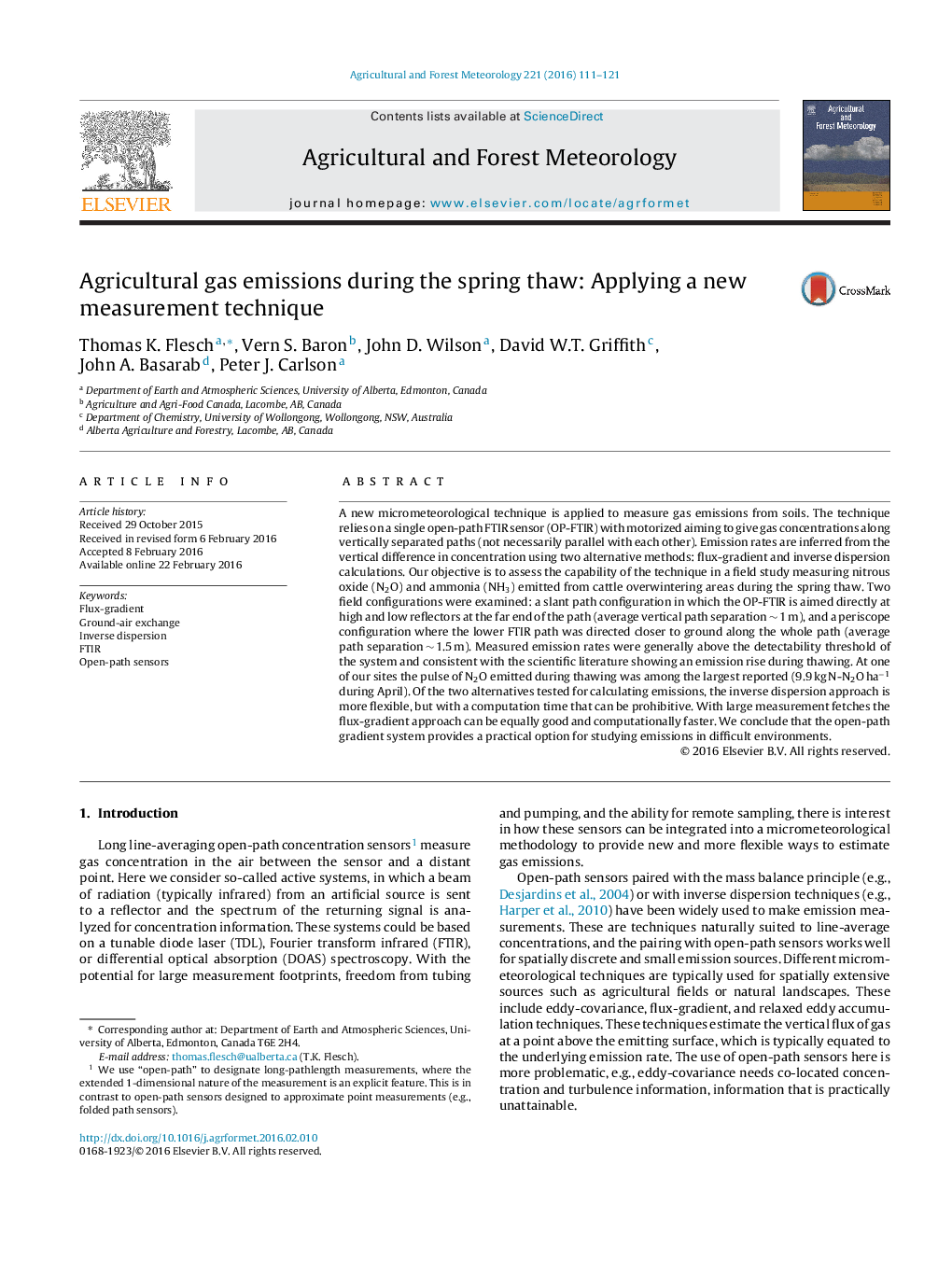| کد مقاله | کد نشریه | سال انتشار | مقاله انگلیسی | نسخه تمام متن |
|---|---|---|---|---|
| 81367 | 158312 | 2016 | 11 صفحه PDF | دانلود رایگان |
• New emission measurement procedure exploits paired open-path, line-averaging gas detectors.
• Emission calculations based on either flux-gradient relationship or inverse dispersion model.
• Open-path FTIR sensor deployed to measure fluxes of nitrous oxide and ammonia from soils during spring thaw.
• Large emissions of nitrous oxide and ammonia were seen as the soil thawed.
• Open-path sensor provides a logistically convenient way to measure emissions in a difficult environment.
A new micrometeorological technique is applied to measure gas emissions from soils. The technique relies on a single open-path FTIR sensor (OP-FTIR) with motorized aiming to give gas concentrations along vertically separated paths (not necessarily parallel with each other). Emission rates are inferred from the vertical difference in concentration using two alternative methods: flux-gradient and inverse dispersion calculations. Our objective is to assess the capability of the technique in a field study measuring nitrous oxide (N2O) and ammonia (NH3) emitted from cattle overwintering areas during the spring thaw. Two field configurations were examined: a slant path configuration in which the OP-FTIR is aimed directly at high and low reflectors at the far end of the path (average vertical path separation ∼ 1 m), and a periscope configuration where the lower FTIR path was directed closer to ground along the whole path (average path separation ∼ 1.5 m). Measured emission rates were generally above the detectability threshold of the system and consistent with the scientific literature showing an emission rise during thawing. At one of our sites the pulse of N2O emitted during thawing was among the largest reported (9.9 kg N-N2O ha−1 during April). Of the two alternatives tested for calculating emissions, the inverse dispersion approach is more flexible, but with a computation time that can be prohibitive. With large measurement fetches the flux-gradient approach can be equally good and computationally faster. We conclude that the open-path gradient system provides a practical option for studying emissions in difficult environments.
Journal: Agricultural and Forest Meteorology - Volume 221, 1 May 2016, Pages 111–121
